Since we met Ernst’s work, we are growing our commitment to provide information about this innovative way of farming. Thanks to many partners and to a growing audience (and above all, to our dear followers and supporters of the membership area), we’ve been able to dedicate more time to produce this work. Here we would like to share more of who we are and what brought us here highlighting parts of this more-than-a-decade enriching journey.
Our story starts in 2006, when I got to know the work of the swiss farmer Ernst Götsch through texts and articles. At that time, I already knew that some successful agroecological and agroforestry experiences in the country could be traced back to him. His influence was found in Rede Ecovida, Cooperafloresta, in innovative projects in the semi-arid (Centro Sabiá) and companies like Michelin. The following year I participated in one of his courses. Unlike the image that was constructed by some groups that perceived him as a type of guide or mentor, I did not witness any esoteric or spiritual reference. What I saw and heard was a fairly coherent interpretation of what we can observe of the natural world, with a well-defined conceptual framework.
At that time, I worked as a director of a small NGO of audiovisual production. I asked Ernst to visit his farm intending to shoot an informal report about his work. A few months later I traveled with my dear friends Ilana Nina and Monica Soffiatti to Piraí do Norte, in the south of Bahia, where he lived with his wife and two daughters. That few-days experience revealed my ignorance about agriculture and the environment itself, and also how an agricultural field should look like. I was in the middle of almost 500 hectares of systematically cultivated forest, under strict technical, economic and philosophical criteria, where each question was explicitly answered to explain the balance between these dimensions. On the practical side, Ernst has developed methods of stratification, pruning, selective weeding, seed planting and the identification and management of the many influences that define the health of a system. On the theoretical side, he submits his decisions to a fierce set of ethical principles, built during his 50+ years of studies and experiments.
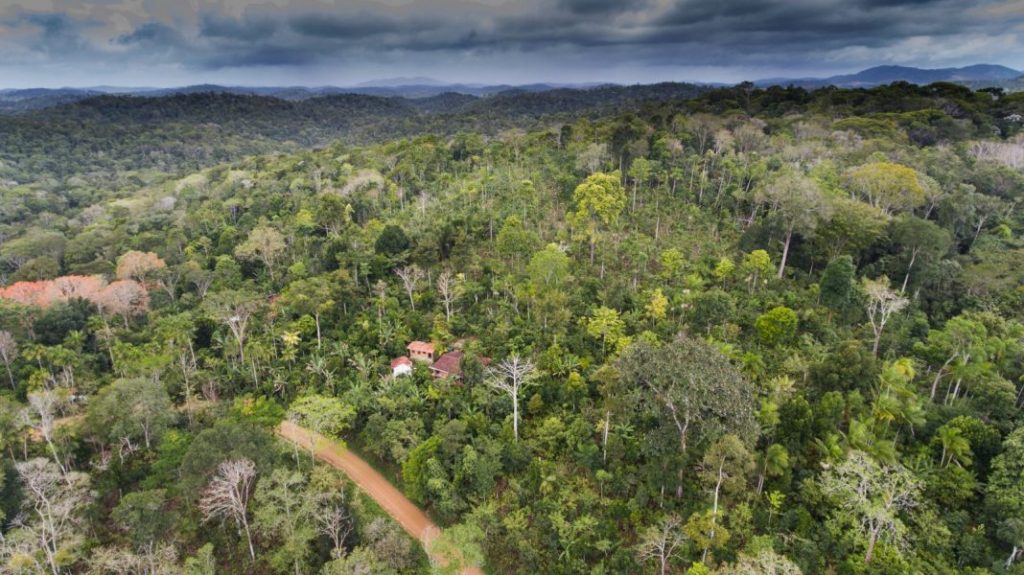
Almost everything I ate during those days I had never had before in my life. Most were fruits, roots and leaves from the Atlantic Rainforest (my “native” environment) and the Amazon. The place was not a forest as I knew it. I was in an agricultural system that ran under a logic different from the one I learned in school, and whose result was visible in the field, on the table and in the pocket, since there was always something to sell.

From Ernst’s house we went to Jaguaquara (BA), to the farm of one of his long-time students, Henrique Sousa. At Fazenda Ouro Fino, the fields were worked under the same logic. In the younger areas, there were three, four, sometimes five trees growing from the same spot, planted by seeds in near each cassava. There were banana, assai, cocoa, cupuassu, avocado, jackfruit, mango tree, many native species and timber. Lots of timber. His 10 and 9-year-old boys presented us the plantations, describing them in space and time, past and future. It was time to harvest cassava. Soon, it would be the banana, then cacao, assai, and so on. In older areas, from 8 to 10 years of age, the income came from fruits, especially assai. Some trees also sowed from the beginning, such as Ochroma pyramidale, now served to make the boxes to ship their products. Father of 6 children, without formal employment and living in a place barely assisted by governmental programs, Henrique Sousa’s property was an example of a prosperous rural family enterprise, where not only food security and quality were considered, but also leisure, income and education. 300 km from there, in Cafarnaum, we witnessed the third generation of Ernst’s legacy, now in a very different climatic situation. Under the technical guidance of Henrique, the farmer Jurandir cultivated more than thirty species of plants, producing honey and milk in the arid Brazilian northeastern. From the dry, shallow and rocky soil, the farmer harvested the whole year round in a system without irrigation and technically impeccable, sustained with plants like cacti and agaves for later use as a type of “hydrogel” in the driest periods. We saw a change in the management of resources that were already available, a reorganization of the farmer in space and his mediation with it. In a few hours, he described what had changed in his life. He met, for the first time, an abundant diet. The health of his wife, previously fragile, had re-established. He reflexively understood the origin of some social and economic injustices and proudly dreamed promising solutions to fight hunger and misery in the drylands.

In these three experiments, I have seen the immediate realization of a new type of farmer, far from the culturally reproduced stereotypes associated with suffering, misery and hard work. Their routines not only served the business purpose inherent in the activity, but also filled gaps as necessary as subtle in rural environments. These farmers shared other relationships with their lands. Feelings I knew by definition, but not in practice. The visit yielded the minidocumentary “Neste Dão Tudo Dá”, aired by “TV Escola” for six years, and also turned into a didactical material recommended by MEC (Ministry of Education) to the public school system.
After such experience, a whole new world started to make sense. Before, I saw agriculture as an activity as any other. It hit me strong the realisation that farming is the pivot of our society, and only through farming we can understand and build a new humanity, more aware of the consequences of our reckless intervention with nature.
In the following years, we got even closer to Ernst and to his brilliant students. We participated together in many projects in the Amazon, then Agenda Gotsch, TV series, São Sebastião Farm, Life in Syntropy and so on. More than a decade of practical and theoretical learnings. We’ll share each step of that trajectory in upcoming posts.
***This text is an excerpt of the preamble of the master thesis “The Syntropic Agriculture of Ernst Götsch: history, principles and its niche within the realm of sustainable agriculture, available for download (Portuguese only) on PPG-CiAC – Nupem (UFRJ) website.
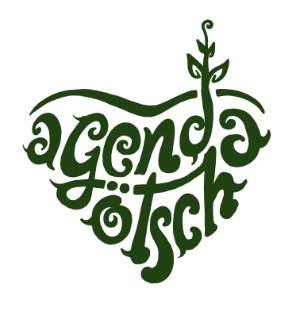

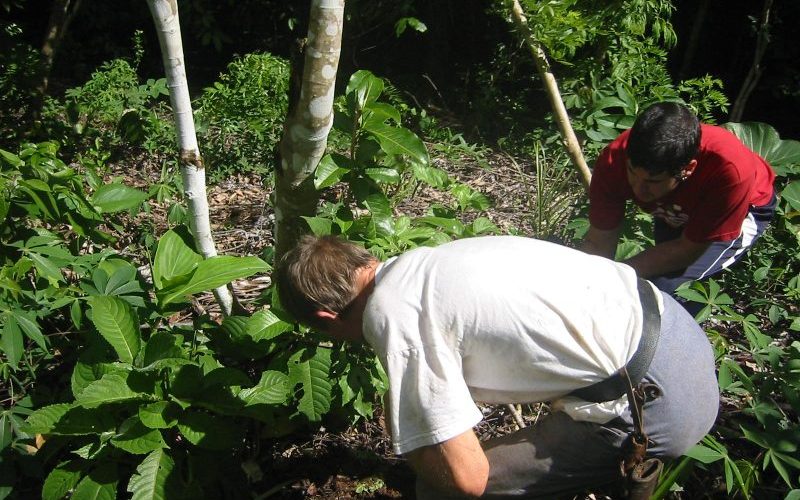

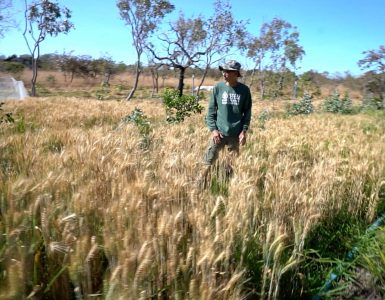
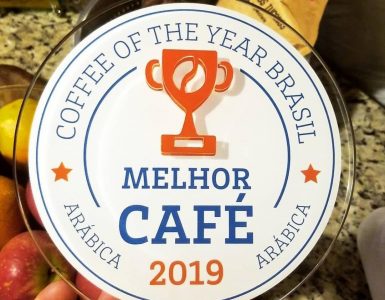

Não tenho palavras de apreciação, você nos enche de orgulho! Sabia que viria coisa muito boa mas não imaginei tanto, vou aguardar ansiosa os próximos! Bjs.
Obrigado pelo carinho de sempre tia. Suas palavras têm mais efeito do que pode imaginar… beijos beijos 😗😗
Incrível!
A Agricultura Sintrópica clareou a minha visão sobre a vida 🙂
Nós podemos fazer deste mundo um paraíso ^^
Muita gratidão a tod@s que tornam o Life in Syntropy possível ~;~
Muito obrigado Ormando! Palavras como as suas nos estimulam a seguir em frente. 😊😊😊 um grande abraço de toda nossa equipe
Obrigado pela dedicação! Este é um lindo trabalho!
Estou no sul do Brasil, região da serra gaúcha, aqui faz frio boa parte do ano. O ritmo de desenvolvimento dos vegetais muda drasticamente. As “janelas” de plantios são limitadas, quanto mais aumenta a quantidade de espécies na implantação, mas difícil pensar, agir e não perder o prazo. Muitas sementes coletadas no meio/final do verão, por exemplo, não podem esperar o fim do inverno pra colocar na terra. As bananas precisam apoio para enfrentar a geada desde o início. Se uma clareira é aberta na mata no inverno, a sucessão inicial será um pouco diferente da de uma clareira aberta na primavera. E assim por diante, esses são os desafios de quem está iniciando nos voos da agricultura sintrópica, no frio! Espero que em breve possam resgatar e relatar experiências dessa região para compartilhar!
Abraços!
Olá Cristiano! Obrigado por compartulhar sua experiência. De fato a geada complica a vida da banana. De toda forma, um sistema altamente estratificado ajuda a proteger algumas plantas contra a geada. Nós vamos começar a trabalhar em climas mais frios a partir de setembro, onde também ha geada. Espero que possamos ajudar com mais informações úteis. Existe um ótimo agricultor fazendo um trabalho bonito em Chuí, se quiser trocar experiencias, posso fazer uma ponte. Basta me enviar um email para felipe.pasini@lifeinsyntropy.org. um forte abraço e obrigado pelas palavras de apoio. 😊